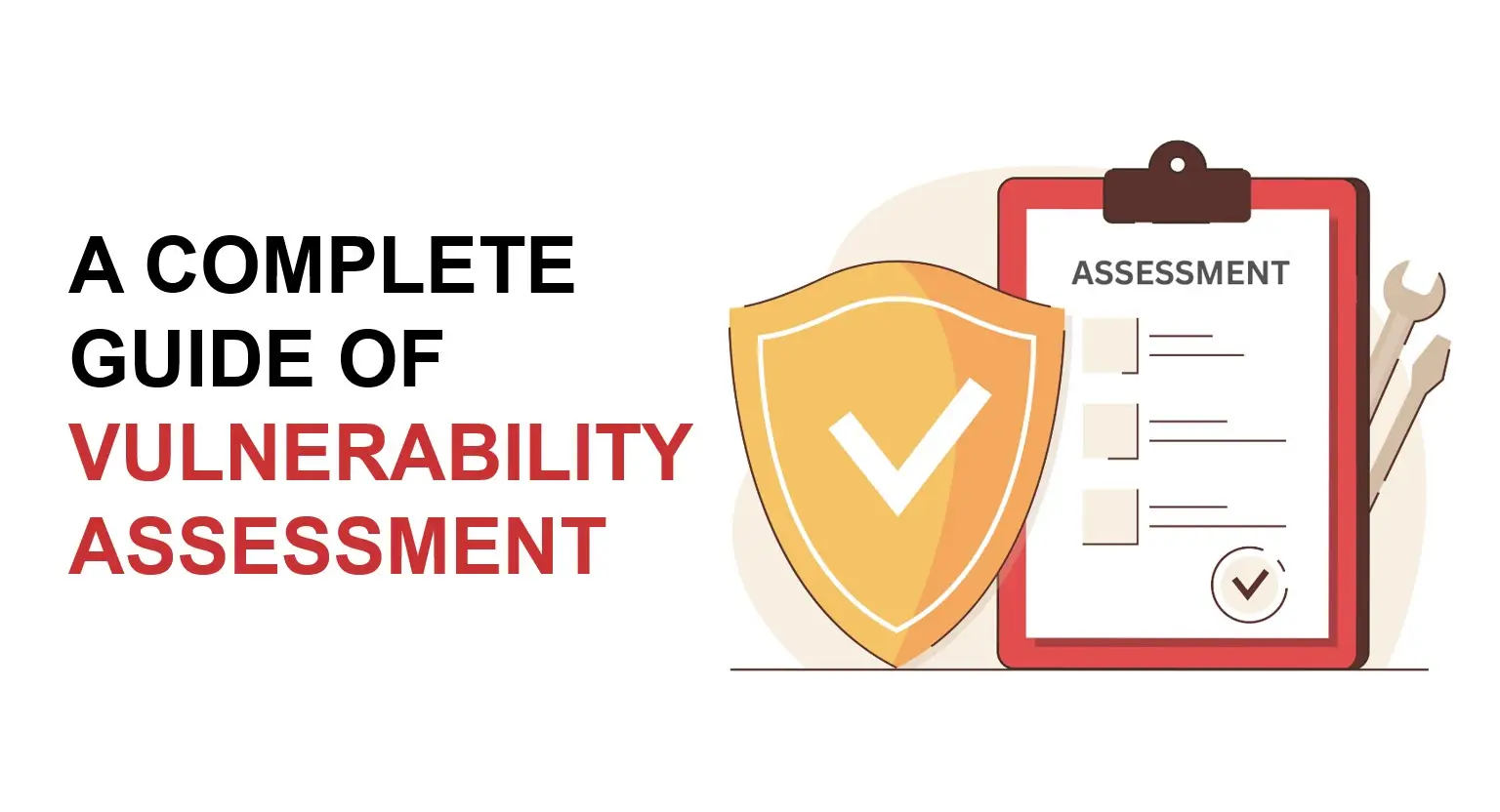A Complete Guide Of Vulnerability Assessment

1 Minutes 46 Seconds | 1478 views
Listen This Blog Now!
Introduction
A vulnerability assessment is an important step in securing any organization's network and systems. It is a process of identifying, classifying, and prioritizing vulnerabilities present in an organization's IT infrastructure. This guide will provide a complete overview of the vulnerability assessment process, including the types of assessments, tools used, and best practices for implementing a successful vulnerability assessment program.
First, let's define the types of vulnerability assessments. There are two main types: external and internal. An external vulnerability assessment focuses on identifying vulnerabilities that can be exploited by attackers from outside the organization, such as through the internet. An internal vulnerability assessment focuses on identifying vulnerabilities that can be exploited by attackers who have already gained access to the organization's network, such as through a compromised employee account.
Tools Used In A Vulnerability Assessment
Next, let's discuss the tools used in a vulnerability assessment. There are several types of tools available, including vulnerability scanners, penetration testing tools, and network mapping tools. Vulnerability scanners are automated tools that scan an organization's network and systems for known vulnerabilities. Penetration testing tools are used to simulate an attack on the organization's network and systems to identify vulnerabilities that can be exploited. Network mapping tools are used to create a map of the organization's network, including the devices and systems connected to it.
Best practices for implementing a successful vulnerability assessment program
- Regularly Scheduled Assessments: Regular assessments help to ensure that vulnerabilities are identified and addressed in a timely manner.
- Prioritization Of Vulnerabilities: High-risk vulnerabilities should be addressed before lower-risk vulnerabilities.
- Remediation: Once vulnerabilities are identified, they should be remediated as quickly as possible.
- Testing: After vulnerabilities are remediated, they should be tested to ensure that they have been properly addressed.
- Reporting: A report should be generated after each vulnerability assessment, detailing the vulnerabilities identified and the actions taken to address them.
Conclusion
Vulnerability assessment is a continuous process and should be integrated into an organization's overall security program. By following the best practices outlined in this guide and using the appropriate tools, organizations can effectively identify and address vulnerabilities in their networks and systems, helping to protect against potential attacks.
Don't wait for a cyber-attack to happen. Protect your organization now with CyberNX's comprehensive vulnerability assessment service. Our team of experts use state-of-the-art tools and methodologies to identify and prioritize vulnerabilities in your network and systems. Contact us today to learn how we can help you secure your organization.
Table Of Content
- Introduction
- Tools Used in a Vulnerability Assessment
- Best Practices for Implementing a Vulnerability Assessment Program
- Regularly Scheduled Assessments
- Prioritization of Vulnerabilities
- Remediation
- Testing
- Reporting
- Conclusion
Introduction
A vulnerability assessment is an important step in securing any organization's network and systems. It is a process of identifying, classifying, and prioritizing vulnerabilities present in an organization's IT infrastructure. This guide will provide a complete overview of the vulnerability assessment process, including the types of assessments, tools used, and best practices for implementing a successful vulnerability assessment program.
First, let's define the types of vulnerability assessments. There are two main types: external and internal. An external vulnerability assessment focuses on identifying vulnerabilities that can be exploited by attackers from outside the organization, such as through the internet. An internal vulnerability assessment focuses on identifying vulnerabilities that can be exploited by attackers who have already gained access to the organization's network, such as through a compromised employee account.
Tools Used In A Vulnerability Assessment
Next, let's discuss the tools used in a vulnerability assessment. There are several types of tools available, including vulnerability scanners, penetration testing tools, and network mapping tools. Vulnerability scanners are automated tools that scan an organization's network and systems for known vulnerabilities. Penetration testing tools are used to simulate an attack on the organization's network and systems to identify vulnerabilities that can be exploited. Network mapping tools are used to create a map of the organization's network, including the devices and systems connected to it.
Best practices for implementing a successful vulnerability assessment program
- Regularly Scheduled Assessments: Regular assessments help to ensure that vulnerabilities are identified and addressed in a timely manner.
- Prioritization Of Vulnerabilities: High-risk vulnerabilities should be addressed before lower-risk vulnerabilities.
- Remediation: Once vulnerabilities are identified, they should be remediated as quickly as possible.
- Testing: After vulnerabilities are remediated, they should be tested to ensure that they have been properly addressed.
- Reporting: A report should be generated after each vulnerability assessment, detailing the vulnerabilities identified and the actions taken to address them.
Conclusion
Vulnerability assessment is a continuous process and should be integrated into an organization's overall security program. By following the best practices outlined in this guide and using the appropriate tools, organizations can effectively identify and address vulnerabilities in their networks and systems, helping to protect against potential attacks.
Don't wait for a cyber-attack to happen. Protect your organization now with CyberNX's comprehensive vulnerability assessment service. Our team of experts use state-of-the-art tools and methodologies to identify and prioritize vulnerabilities in your network and systems. Contact us today to learn how we can help you secure your organization.
Share this on: